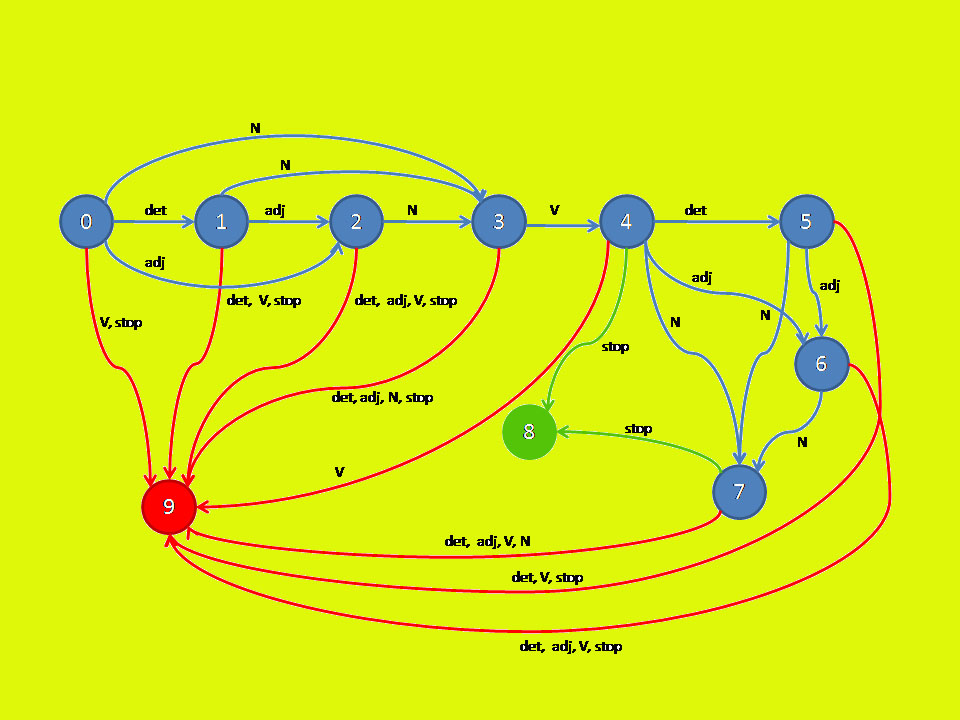Team:Sweden/Project
From 2009.igem.org
| Line 5: | Line 5: | ||
background: #0000A0 url(https://static.igem.org/mediawiki/igem.org/4/48/Test_image.gif) repeat fixed; | background: #0000A0 url(https://static.igem.org/mediawiki/igem.org/4/48/Test_image.gif) repeat fixed; | ||
} | } | ||
| + | #bodyContent {background-color:gold;} | ||
| + | #content {background-color:gold;} | ||
| + | #footer-box {background-color: #CCCCCC;} | ||
| + | P {color: #FFCC33;} | ||
| + | |||
</style> | </style> | ||
| Line 27: | Line 32: | ||
{|align="justify" | {|align="justify" | ||
| - | | | + | |bgcolor="gold"| |
---- | ---- | ||
| - | We want to implement this automaton in the cell. It is based on a few simple rules on how to parse a simple sentence like The little girl plays ball or Boys stroke the little dog. These simple rules are : | + | <font color="blue">We want to implement this automaton in the cell. It is based on a few simple rules on how to parse a simple sentence like The little girl plays ball or Boys stroke the little dog. These simple rules are : |
: S NP VP | : S NP VP | ||
| Line 39: | Line 44: | ||
We target only the parts of speech (POS) tags because this way the grammar can be implemented as a finite state automaton (FSA) and not as a push-down automaton. | We target only the parts of speech (POS) tags because this way the grammar can be implemented as a finite state automaton (FSA) and not as a push-down automaton. | ||
A finite state automaton is a 5-tupel A = (Q, Σ, δ, s0, F), where Q is a finite set of states, Σ is the finite set of input symbols (alphabet), δ is the transition function, δ: Q × Σ -> Q, s0 is the start state and F is the set of final/accepting states with .  | A finite state automaton is a 5-tupel A = (Q, Σ, δ, s0, F), where Q is a finite set of states, Σ is the finite set of input symbols (alphabet), δ is the transition function, δ: Q × Σ -> Q, s0 is the start state and F is the set of final/accepting states with .  | ||
| - | The sentence is a string of different reagents which will be introduced to the cell one by one. As soon as a wrong input is detected the cell will light up red. A sentence is finished by a stop reagent and then the cell will light up green. | + | The sentence is a string of different reagents which will be introduced to the cell one by one. As soon as a wrong input is detected the cell will light up red. A sentence is finished by a stop reagent and then the cell will light up green. </font> |
---- | ---- | ||
|[[Image:teamsweden_state.png|500px|right]] | |[[Image:teamsweden_state.png|500px|right]] | ||
Revision as of 10:47, 18 October 2009
| Home | Team | Project | Mathematical Modelling | Logbook | Result | Parts | Sponsors |
|---|
Project
|
We want to implement this automaton in the cell. It is based on a few simple rules on how to parse a simple sentence like The little girl plays ball or Boys stroke the little dog. These simple rules are :
We target only the parts of speech (POS) tags because this way the grammar can be implemented as a finite state automaton (FSA) and not as a push-down automaton. A finite state automaton is a 5-tupel A = (Q, Σ, δ, s0, F), where Q is a finite set of states, Σ is the finite set of input symbols (alphabet), δ is the transition function, δ: Q × Σ -> Q, s0 is the start state and F is the set of final/accepting states with .  The sentence is a string of different reagents which will be introduced to the cell one by one. As soon as a wrong input is detected the cell will light up red. A sentence is finished by a stop reagent and then the cell will light up green.
|
 "
"

